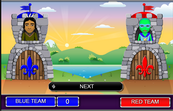Interactive Maps For Children Online
Interactive Maps For Children Online | interactive geo maps | creating an interactive map. This page contains links to interactive maps of countries and continents of the world. Many people struggle with their world geography skills. These resources are here to help you go over that. Each map is a drag and drop interactive quiz or game that can help anyone to study. Teachers can use this resources as well in their regular classroom.
Interactive maps world | Interactive maps of the world
Interactive maps of the world are digital maps that allow users to interact with different elements of the map in real-time. These maps are accessible through various devices such as desktop computers, tablets, and smartphones. Interactive maps of the world offer an immersive experience for exploring geography, culture, and history. They provide a more engaging way to visualize data and information, making it easier to understand and analyze.
One of the most significant advantages of interactive maps of the world is that they allow users to customize their experience based on their needs and interests. Users can zoom in and out, switch between different layers, and toggle on or off specific features. They can also use the search function to find specific locations and get detailed information about them. This level of customization is particularly useful for educational purposes, where teachers can create interactive lesson plans and students can explore geography on their own.
Interactive maps of the world are also an excellent tool for businesses that operate globally. For example, an international company can use interactive maps to visualize its global presence and to plan new investments in specific locations. It can also use interactive maps to display data on sales, market share, and customer demographics. This information can be used to optimize business strategies and make informed decisions.
There are several types of interactive maps of the world, each with its own unique features and benefits. For example, political maps show the boundaries of countries, states, and provinces. They are useful for studying political systems, population demographics, and international relations. Physical maps, on the other hand, show topography, including mountains, rivers, and oceans. They are useful for studying the natural world, geology, and climate patterns. Historical maps display how the world has changed over time, including the rise and fall of empires, wars, and political boundaries. They are useful for studying history and understanding how the past has influenced the present.
Interactive maps of the world can also display a wide range of data beyond geographic features. For example, heat maps can be used to visualize data such as population density, climate patterns, and energy consumption. This type of map uses colors to represent data, with warmer colors indicating higher values and cooler colors indicating lower values. Such maps are helpful for identifying patterns, trends, and anomalies in data.
In recent years, interactive maps of the world have become increasingly sophisticated. For example, some maps use artificial intelligence to provide real-time information about traffic, weather, and other environmental conditions. Such maps are useful for travelers, commuters, and logistics companies. They can help people plan their routes and avoid congestion or inclement weather.
Another recent development in interactive maps is the use of augmented reality (AR). AR is a technology that superimposes digital information over the physical world. In the case of interactive maps, AR can provide additional information about specific locations, such as historical events, cultural landmarks, and tourist attractions. This type of map is useful for travelers who want to learn more about the places they visit.
Interactive maps of the world are also used in various industries, including urban planning, architecture, and environmental science. For example, urban planners can use interactive maps to visualize proposed changes to a city's infrastructure and see how they might affect traffic flow, public transportation, and pedestrian safety. Architects can use interactive maps to plan and design buildings that fit into the existing landscape and take into account environmental factors such as wind, sun exposure, and noise pollution. Environmental scientists can use interactive maps to study patterns of deforestation, land use, and water management.
In conclusion, interactive maps of the world provide a powerful tool for exploring, analyzing, and visualizing geographic and other data. They allow users to customize their experience based on their needs and interests and offer a more engaging way to learn and discover.








